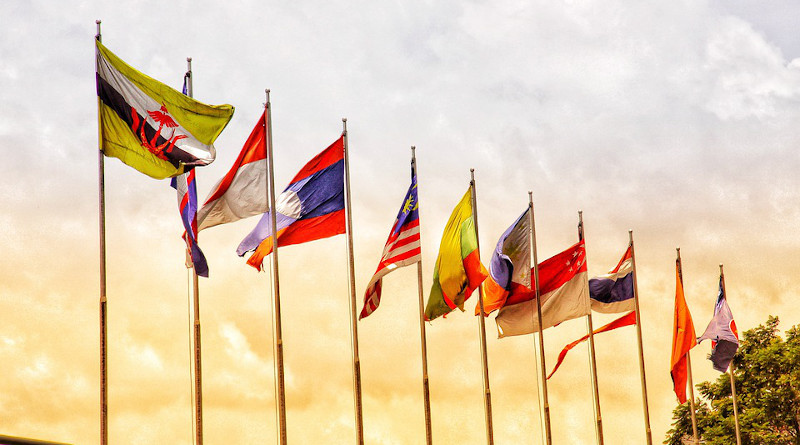ASEAN Needs To Work Together On Green Energy – Analysis
By Noah Kittner*
With global concerns rising over climate change and carbon lock-in, Southeast Asia has a unique opportunity to advance its economy and global leadership by constructing a regional low-carbon electricity grid. ASEAN countries can match extensive solar energy resources with advanced manufacturing capability for battery energy storage and electric vehicles, making them prime candidates to lead the global transition to clean energy.
Following the Paris Agreement, many ASEAN countries have revised their power development plans to include ambitious commitments to power sector decarbonisation. ASEAN countries have agreed collectively to generate at least 23 per cent of their electricity from renewable sources by 2025. Progress is rapid — Vietnam has approved more than 11 gigawatts (GW) of new wind projects and Thailand is developing 2.7 GW of floating solar.
While these are important first steps, they are not enough to maximise the potential benefits of a renewable energy transition. To achieve full energy system decarbonisation, ASEAN countries will need to coordinate regionally and build trust and dialogue.
Thailand’s new Energy Hub 4.0 Strategy has the potential to expand transmission interconnections throughout Southeast Asia and facilitate more efficient and low-carbon trade in electricity across countries. But to enable a more integrated ASEAN power grid, better forecasting and crediting and the development of new technologies are essential.
One study on renewable energy preparedness across the region highlights the challenges and opportunities of achieving renewable energy grid integration between ASEAN states. Centralised renewable energy forecasting and data analytics are critical to integrating solar and wind electricity at a large scale but many countries lack the forecasting that is needed to ensure smooth grid operations.
Improved markets and systems are necessary due to the varied range of dispatch capabilities from Laos to Singapore. Countries are expanding their capacities quickly — Vietnam recently surpassed Thailand, the Philippines and Malaysia for total installed solar capacity and met its 18.6 GW target for 2030 10 years ahead of schedule. Investments are aligned with these decarbonisation targets but to put these technologies into action there needs to be coordinated investment in enabling technologies such as energy storage, transmission, forecasting and crediting systems.
One barrier is a lack of supercomputing research centres that can forecast and optimise new power systems. The same methods used by the United States at the National Renewable Energy Lab take weeks to compute in Vietnam. Investment, training and global knowledge sharing could accelerate this transition.
Developing a crediting system to verify and validate low-carbon electricity could help distinguish between environmentally threatening coal-fired power plants, mainstream hydropower dam development and more benign low-carbon electricity sources. It could also help establish grid codes and standards for countries that help to increase renewable electricity uptake and reduce integration costs. Countries with growing grids but a lack of large-scale transmission capacity could trade low-carbon electricity with countries that have larger demand. An example is the 600 MW Monsoon wind power trade agreement between Laos and Vietnam.
A proper credit system could also disincentivise large-scale projects such as the 912 MW Pak Beng dam, a project that threatens river health and prevents least-cost power generation from solar and wind from participating in pre-negotiated electricity trade agreements. This system could reward projects that reduce carbon emissions. For instance, the Laos–Thailand–Malaysia–Singapore power trade agreement of 100 MW that is set to begin in 2022 represents a scalable model for further ASEAN-wide power grid development, but only if its carbon reductions are measured and validated.
If green hydrogen becomes part of a fossil fuel phase-out strategy in Southeast Asia, verification will also be critical for monitoring the greenhouse gas emissions associated with green hydrogen production. This could come in the form of standardised life cycle assessments and certification protocols similar to those used to certify biofuels for their greenhouse gas emission equivalency.
Green hydrogen may help accelerate the phaseout of natural gas, which is imported by many ASEAN countries. States in the region could use electricity to build new electrolyser technologies for industrial energy demands while their electricity sectors decarbonise. This could enable more localised energy production while building more renewable energy infrastructure.
While financing new coal plants in Southeast Asia remains unlikely, current economics are driving coal-fired power plants to displace renewable power plants on the grid. For greater renewable energy uptake, more market-based power system planning is needed. Restricting coal generation output or expediting early coal retirement could accelerate low-carbon electricity goals across the region but this has not yet been seriously explored.
From an international planning perspective, cooperation is key to achieving these goals. Coordination across sectors will be needed to avoid ecological disasters from hydropower reliance and a resultant loss of water resources. Building capacity for battery energy storage and for the adoption of electric vehicles may also lead to economic growth and job creation.
But coordination on energy storage and electricity system transmission will be essential to developing a low-carbon electricity network across Southeast Asia.
*About the author: Noah Kittner is an Assistant Professor in the Department of Environmental Sciences and Engineering at the University of North Carolina at Chapel Hill.
Source: This article was published by East Asia Forum

